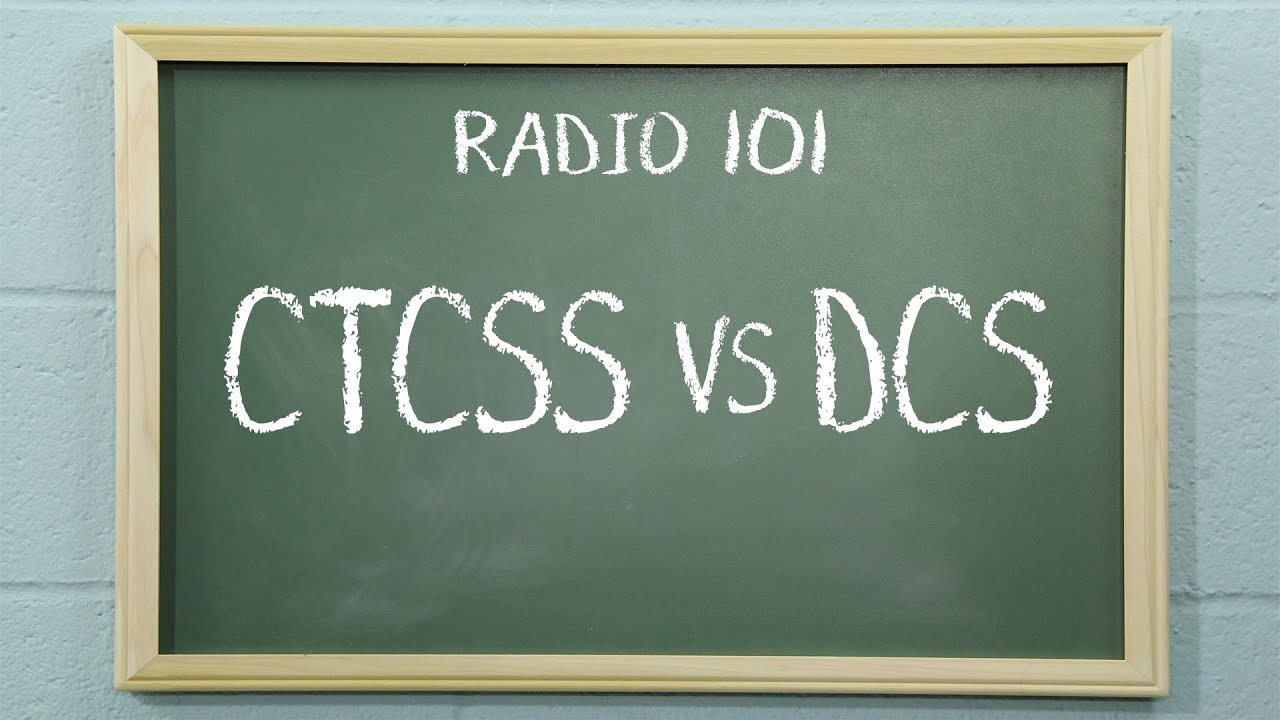In this episode of Radio 101, Tommy explains the difference between CTCSS tones and DCS codes in a two way radio and how they work.
I have a GMRS radio so i can only hear repeater traffic if i add the tones for that repeater? i assume out of the box i can hear any non repeater traffic that is in range of the radio?
Yep - think of CTCSS as a gatekeeper - no tone, or wrong tone and your radio stays silent.
Hmm… That video does not discuss the difference between CTCSS and DCS - it just gives a very simplistic explanation of what the acronyms stand for and what they do. I was expecting a discussion of why one would use CTCSS versus DCS, but that was unfortunately lacking from this presentation.
That is because it is a simple difference. As explained in the video, they both perform the same function, except one does it using an analog tone and the other a digital code. The video was not intended to get into a long technical explanation for techs, but a quick, basic tutorial for general purpose users, hence the name Radio 101.
Although there are technical reasons why someone like a repeater owner or hobbyist who is totally immersed in radio may prefer one over the other, that isn’t who the video is for. In day-to-day consumer use, whether one decides to use CTCSS or DCS is really a matter of preference. Most basic users don’t care how it works, they just want to know that it does, what it does and how to use it.
We appreciate the feedback!
Upon what would that “preference” be based? Why have both options if they both do “the same thing”? (these are questions I have as a relative newcomer to GMRS). I know what both CTCSS and DCS do (and how they work) but have wondered why both exist when they essentially do the same thing…
Low CTCSS tones can’t usually be heard in the background, but the higher ones often can - depends on the filtering of individual radio designs. Many repeaters ‘perk up’ when they detect the tone, but many will not immediately cut you off if the tone becomes undetectable during a quick drop in signal strength. DCS is a higher tone, and often heard because it’s a squarewave and the harmonics creep into the audio passband. The radios usually also immediately shut the squelch at the end of the transmission before the RF ceases - so you get a silent ending, not the usual ‘phutt’ noise. More possible digital codes than the CTCSS analogue ones, so if you look at both - DCS does the same things just a little more precisely. In practice, most people don’t notice a difference. The two signalling systems do pretty much the same thing, just differently. I doubt users even know which is in use. Just like we have USB and LSB, FM or AM, and all the variations in digital. I doubt most people can tell if it’s DMR or P25, or Nexedge or … either!
